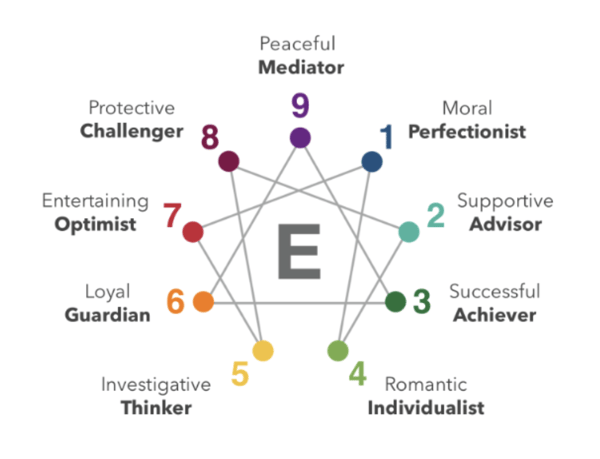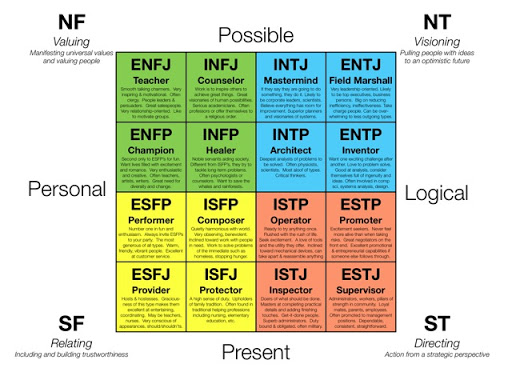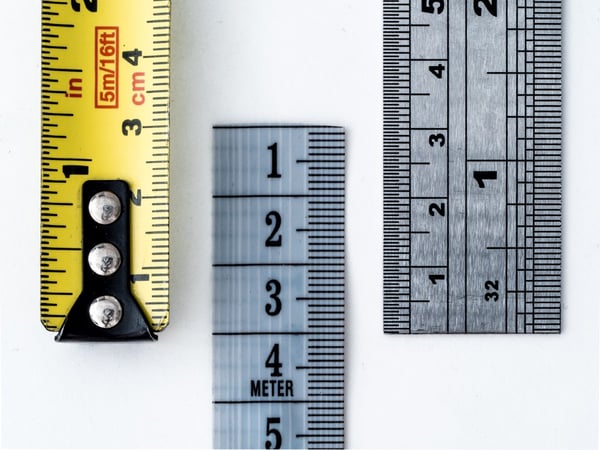People often ask us why we based our AI-powered personality and communication analysis on the Big 5 Model instead of other methods, such as Enneagram, and MBTI. Accordingly, we will give you a summary of these common assessment methods and talk about their differences and connections.
In the field of psychology, the five dimensions (the ‘Big Five’) are commonly used in the research and study of personality. Since the late 20th Century, these factors have been used to measure, and develop a better understanding of individual differences in personality. It's commonly used as a pre-employment assessment---and as a basis for other personality systems. The Enneagram and the Myers-Briggs pull from the science-based Big Five.
What Is the Enneagram?
The Enneagram consists of nine main, overarching types that interact with each other in unique ways. Another feature of the Enneagram is that it has “wings,” which highlights a few other dimensions of personality. A person’s wing illustrates their secondary Enneagram type. It’s common for a person to exhibit traits of another Enneagram type.

What is MBTI?
The Myers-Briggs Type Indicator (MBTI) has 4 dimensions that reveals how an individual gathers information and makes decisions. The 4 dimensions can come in 16 different combinations, ultimately creating 16 different types of personalities.
The 8 Functions
Extraverted Thinking (Te)/ Introverted Thinking (Ti)
Extraverted Feeling (Fe)/ Introverted Feeling (Fi)
Extraverted Intuition (Ne)/ Introverted Intuition (Ni)
Extraverted Sensing (Se)/ Introverted Sensing (Si)

The Big Five Personality Traits (or OCEAN) is a result of researched trait theory. Personality is one of the most complex areas to understand. After decades, researches narrowed down personality into 5 main characteristics.
How Does the Big 5 Differ from MBTI and Enneagram?
Most significantly, the MBTI and Enneagram give a personality type—rather than a personality trait. The Big Five are individual characteristics that can be placed high or low. Given the Big 5 is a science-wide consensus, psychologists use traits versus types to talk about personality. Because personality is characterized as a collection of traits, it’s especially valuable to workplace items like pre-employment assessments.
Type descriptions, used in MBTI and Enneagram, do have some correlations with the Big 5. How scientific these correlations may be up for debate, but MBTI and Enneagram do pull from the Big 5. These systems share similarities.
|
1. Openness to experience
2. Conscientiousness
3. Extraversion
4. Agreeableness
5. Neuroticism
The Big 5 theory stems from the lexicon of adjectives used to describe a person. They assumed traits are basically adjectives or short, descriptive phrases. Therefore the early practice of what would be personality research involved thumbing through the dictionary.
Yes, really. The whole theory is rooted in the idea that individual differences that are socially relevant would naturally arise in their language. The more common the word becomes, the greater the likelihood that a significant difference is summarized in a single world.
The scientific community regards the Big Five as the only scientific consensus in personality psychology.
Defining the Big 5

Openness to experience
Think of those people who have a willingness to try new activities or who are open to unconventional, new ideas. This dimension expressed in the willingness to try out the unknown.Traveling to new places and visiting new cultures are a few indicators of a person more “open”. Those who have low levels are generally skeptical about the unknown and questioning the status quo.
Conscientiousness
This personality trait found in the Five Factor Personality Model examines impulse control. Individuals who are more conscientious on this particular facet of the personality scale are able to control impulse. They’re the classmates who tend to organize their class assignments by color; the co-workers who use a desk calendar in addition to their online calendar and journal calendar.
Extraversion-Introversion
This dimension refers to how people gain their energy. Extroverts to gain energy from activities and people. Introverts prefer the world of ideas and internal thoughts. Extroverts possess the special ability to advance projects quickly. Introvert’s special skills include picking up the moving dynamics of a particular situation.
Agreeableness
Agreeable individuals take a rather maternal and a more cooperative approach to situations. They care deeply about people, more so than themselves. They are far more likely to consider and incorporate the feelings of others in decisions. Those who score low in agreeableness are viewed as “competitive”.
Neuroticism
Neuroticism refers to the emotional stability a person has. If they tend to be emotionally stable ---meaning their moods tend to stay pretty constant--- they would be termed as “low neuroticism”. If their moods and feelings fluctuate over a period of time, they are labeled with “high neuroticism”.
The Big 5, the Enneagram, and the MBTI share similarities. The biggest distinction is that the personality type tests pull from the research-based Big 5 model. Here you find out more about the foundations of the Big 5 model and how it is used by professionals around the globe.
What Really Counts: Self-Assessment vs. Observer-Ratings
More important than the differentiating between Big 5, Enneagram, and MBTI is the way in which they are measured. Personality tests can be based on self-assessments and on observer ratings. Self-reporting concentrates on how an individual measures their own internal dynamics. Observer ratings focus on how a peer or a neutral observer perceives the personality of an individual.
Self-reporting and observer ratings do not provide redundant information, but actually, capture complementary aspects of an individual’s personality. One explanation of the self-and-observer difference in personality evaluation is that observer evaluation is more shaped by social behaviour and thus formed by how others perceive an individual. Conversely, personality self-ratings are comparatively more shaped by own feelings and motives.
If self-reporting and observer ratings are not necessarily measuring the same aspects of personality, which measurement method is more relevant in the workplace? In short, it depends on the question. In a workplace context, such as hiring and recruitment, it turns out observer ratings have incremental predictive validity over self-reporting.
For example, Mount et al. (1994) examined whether observer ratings from supervisors, co-workers, or customers could predict performance; they found that Conscientiousness and Extraversion assessed externally (e.g., supervisor) were valid predictors for job performance. Self-assessments usually do not offer the same predictive accuracy.
AI-based Observer Ratings - Faster and Less Biased
In the past, observer-based personality tests required human observers. Accordingly, they occurred high costs and were prone to biases. Nowadays, more and more organizations rely on AI-based observer ratings to solve these issues. Retorio has developed neuronal networks that analyze human behavior in short video interviews or digital training simulations within seconds, free of bias.
Improve your employees' skills with Retorio AI coaching platform. Click below to learn more.




